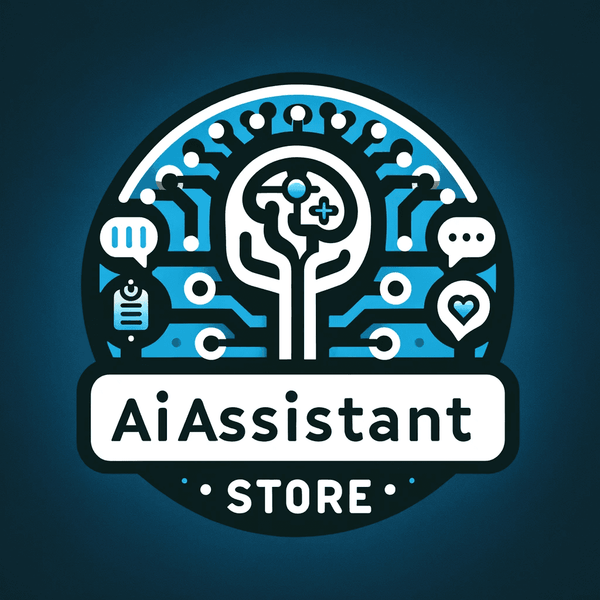When people talk about AI nowadays, the conversation almost always jumps to chatbots that sound freakishly human, massive neural networks crunching data, or those image-recognition systems that spot cats better than some tired humans could. But long before that buzz, there was Symbolic AI. And weirdly enough - it’s still here, still useful. It’s basically about teaching computers to reason like people do: using symbols, logic, and rules. Old-fashioned? Maybe. But in a world obsessed with “black box” AI, the clarity of Symbolic AI feels kinda refreshing [1].
Articles you may like to read after this one:
🔗 What is an AI trainer
Explains the role and responsibilities of modern AI trainers.
🔗 Will data science be replaced by AI
Explores whether AI advancements threaten data science careers.
🔗 Where does AI get its information from
Breaks down sources AI models use to learn and adapt.
Symbolic AI Basics✨
Here’s the deal: Symbolic AI is built on clarity. You can trace the logic, poke at the rules, and literally see why the machine said what it did. Compare that with a neural net that just spits out an answer - it’s like asking a teenager “why?” and getting a shrug. Symbolic systems, by contrast, will say: “Because A and B imply C, therefore C.” That ability to explain itself is a game-changer for high-stakes stuff (medicine, finance, even the courtroom) where someone always asks for proof [5].
Small story: a compliance team at a big bank encoded sanctions policies into a rules engine. Stuff like: “if origin_country ∈ {X} and missing_beneficiary_info → escalate.” The result? Every flagged case came with a traceable, human-readable chain of reasoning. Auditors loved it. That’s Symbolic AI’s superpower - transparent, inspectable thinking.
Quick Comparison Table 📊
| Tool / Approach | Who Uses It | Cost Range | Why It Works (or doesn’t) |
|---|---|---|---|
| Expert Systems 🧠 | Doctors, engineers | Costly setup | Super clear rule-based reasoning, but brittle [1] |
| Knowledge Graphs 🌐 | Search engines, data | Mixed cost | Connects entities + relations at scale [3] |
| Rule-based Chatbots 💬 | Customer service | Low–medium | Quick to build; but nuance? not so much |
| Neuro-Symbolic AI ⚡ | Researchers, startups | High upfront | Logic + ML = explainable patterning [4] |
How Symbolic AI Works (In Practice) 🛠️
At its core, Symbolic AI is just two things: symbols (concepts) and rules (how those concepts connect). Example:
-
Symbols:
Dog,Animal,HasTail -
Rule: If X is a Dog → X is an Animal.
From here, you can start building chains of logic - like digital LEGO pieces. Classic expert systems even stored facts in triples (attribute–object–value) and used a goal-directed rule interpreter to prove queries step by step [1].
Real-Life Examples of Symbolic AI 🌍
-
MYCIN - medical expert system for infectious diseases. Rule-based, explanation-friendly [1].
-
DENDRAL - early chemistry AI that guessed molecular structures from spectrometry data [2].
-
Google Knowledge Graph - mapping entities (people, places, things) + their relations to answer “things, not strings” queries [3].
-
Rule-based bots - scripted flows for customer support; solid for consistency, weak for open chit-chat.
Why Symbolic AI Stumbled (but Didn’t Die) 📉➡️📈
Here’s where Symbolic AI trips up: the messy, incomplete, contradictory real world. Maintaining a huge rule base is exhausting, and brittle rules can balloon until they break.
Yet - it never fully went away. Enter neuro-symbolic AI: mix neural nets (good at perception) with symbolic logic (good at reasoning). Think of it like a relay team: the neural part spots a stop sign, then the symbolic part figures out what it means under traffic law. That combo promises systems that are smarter and explainable [4][5].
Strengths of Symbolic AI 💡
-
Transparent logic: you can follow every step [1][5].
-
Regulation-friendly: maps cleanly to policies and legal rules [5].
-
Modular upkeep: you can tweak one rule without retraining an entire monster model [1].
Weaknesses of Symbolic AI ⚠️
-
Terrible at perception: images, audio, messy text - neural nets dominate here.
-
Scaling pains: extracting and updating expert rules is tedious [2].
-
Rigidity: rules break outside their zone; uncertainty is hard to capture (though some systems hacked partial fixes) [1].
The Road Ahead for Symbolic AI 🚀
The future probably isn’t pure symbolic or pure neural. It’s hybrid. Imagine:
-
Neural → extracts patterns from raw pixels/text/audio.
-
Neuro-symbolic → lifts patterns into structured concepts.
-
Symbolic → applies rules, constraints, and then - importantly - explains.
That’s the loop where machines start resembling human reasoning: see, structure, justify [4][5].
Wrapping It Up 📝
So, Symbolic AI: it’s logic-driven, rule-based, explanation-ready. Not flashy, but it nails something deep nets still can’t: clear, auditable reasoning. The smart bet? Systems that borrow from both camps - neural nets for perception and scale, symbolic for reasoning and trust [4][5].
Meta Description: Symbolic AI explained - rule-based systems, strengths/weaknesses, and why neuro-symbolic (logic + ML) is the path forward.
Hashtags:
#ArtificialIntelligence 🤖 #SymbolicAI 🧩 #MachineLearning #NeuroSymbolicAI ⚡ #TechExplained #KnowledgeRepresentation #AIInsights #FutureOfAI
References
[1] Buchanan, B.G., & Shortliffe, E.H. Rule-Based Expert Systems: The MYCIN Experiments of the Stanford Heuristic Programming Project, Ch. 15. PDF
[2] Lindsay, R.K., Buchanan, B.G., Feigenbaum, E.A., & Lederberg, J. “DENDRAL: a case study of the first expert system for scientific hypothesis formation.” Artificial Intelligence 61 (1993): 209–261. PDF
[3] Google. “Introducing the Knowledge Graph: things, not strings.” Official Google Blog (May 16, 2012). Link
[4] Monroe, D. “Neurosymbolic AI.” Communications of the ACM (Oct. 2022). DOI
[5] Sahoh, B., et al. “The role of explainable Artificial Intelligence in high-stakes decision-making: a review.” Patterns (2023). PubMed Central. Link

